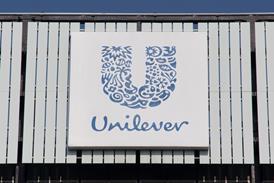When examined as a whole, the market for fish in the UK has become stagnant. Volume sales are the same as they were in 1995 at 330,000 tonnes, while value sales have increased by just 8% to £1.6bn in 1995-2000.
This level of growth is insufficient to offset the effects of inflation in this sector, so in real terms the market has shown only marginal growth.
The influence of traditional fishmongers continues to decline a long-term trend accelerated by expansion of the concept of instore wet fish counters in the major grocery multiples. Fishmongers will continue to be patronised by consumers requiring specialist advice or product preparation, but even in areas of expertise, the grocery multiples are narrowing the gap through product training and recruitment of experts.
Even the most popular type of fish to be bought canned is only used by 59% of households, and this usage centres around salads and sandwiches, which suggests there is significant scope for this and other product areas to achieve higher penetration.
This is especially so in the case of fresh, oily fish, such as herring and mackerel, or their smoked alternatives which are known to be healthy products.
However, these too suffer from the principal consumer objections to fish, which are the presence of bones and odour.
These are the main problems for the fish market to overcome.
It may either choose to address these issues full on, or take the route of increasing the range of value added products, which address both these concerns in addition to the issue of consumer confidence.
{{P&P }}
Close menu
- Home
- Retail & Wholesale
-
Products & Suppliers
- Back to parent navigation item
- Products & Suppliers
-
Product Categories:
- Back to parent navigation item
- Product Categories:
- Alcoholic drinks
- Bakery
- Cereals & breakfast
- Cheese
- Chicken & poultry
- Chocolate
- Confectionery
- Crisps, nuts & snacks
- Dairy
- Fish
- Fresh produce
- Frozen
- Household
- Meat
- Own Label
- Sauces & condiments
- Seasonal
- Soft drinks
- Vaping
- Vegan & plant-based
- World foods
- Suppliers
- People
- Reports & Data
-
Topics A-Z
- Back to parent navigation item
- Topics A-Z
-
Popular topics:
- Back to parent navigation item
- Popular topics:
- Cost of living crisis
- Crime
- Deposit Return Schemes
- Finance
- Government & Regulation
- Health
- Inflation
- Loyalty
- Marketing
- Mergers & Acquisitions
- New Product Development
- Sourcing
- Supply chain
- Sustainability & environment
- Technology
- Ultra Processed Foods
- Vaping
- A-Z all topics
- Content by type:
- Events
- Subscribe now
Sign in to comment on this article
Not logged in before? Register for FREE guest access today.
You will be able to:
- Read more stories
- Receive daily newsletters
- Comment on stories
Advert

















No comments yet